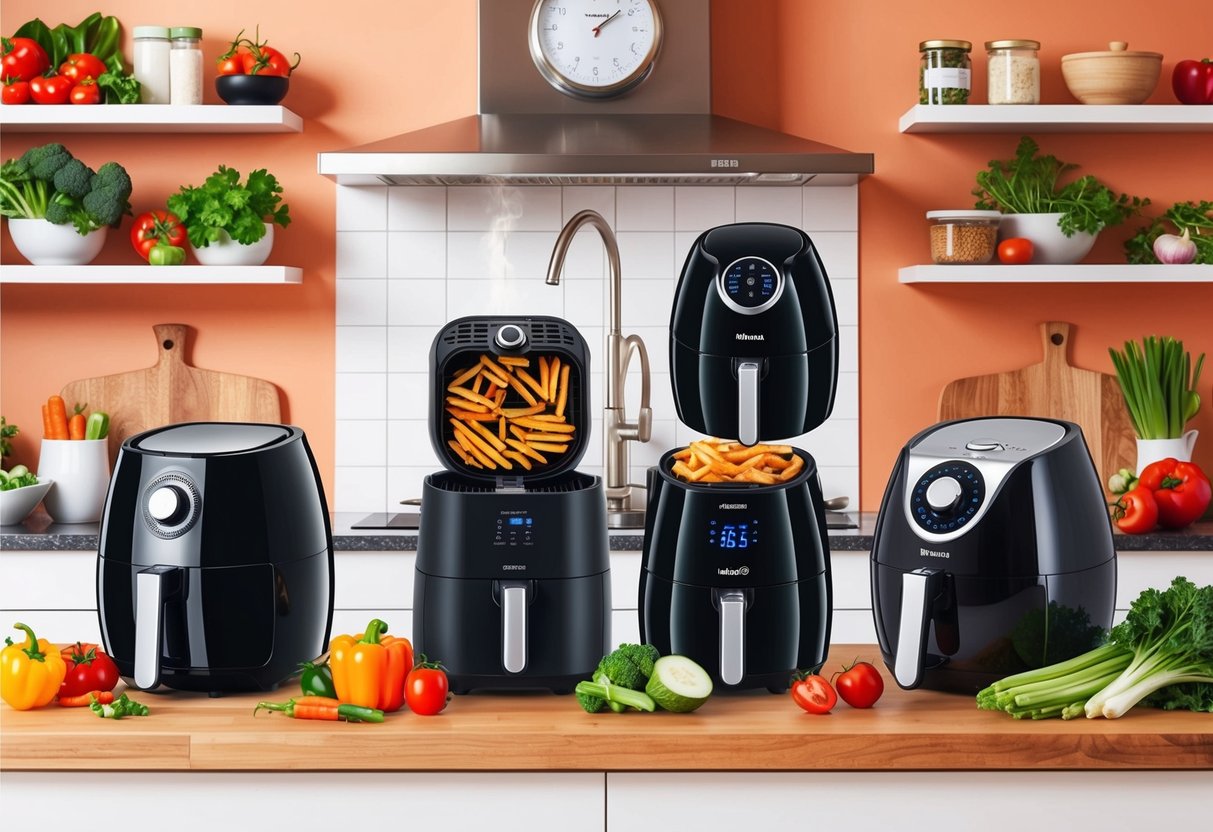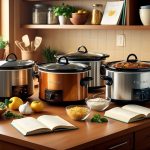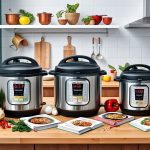
Healthy home cooking has taken a major leap forward with the rise of air fryers, the countertop appliances that use rapid air circulation to crisp food with little to no oil.
The best air fryers for healthy cooking provide crunchy, delicious results with far fewer calories and less fat than traditional frying methods.
Families and individuals alike are turning to these versatile devices to prepare everything from golden fries to roasted vegetables and even lean proteins, all while reducing their use of added oils.
Choosing an air fryer can feel overwhelming with so many models, features, and price points available.
Consumers are looking for user-friendly designs, energy efficiency, easy cleaning, and, most importantly, reliable performance.
This guide reviews top-rated options, including standout models such as the Instant Vortex, Ninja Max XL, and Philips 3000 Series.
It gives a clear overview of what each appliance offers for anyone striving to create healthier meals at home.
With the wide range of choices on the market, it pays to know which air fryer fits a busy lifestyle, small kitchen, or a family’s needs.
By breaking down the most important features—like cooking functions, capacity, and ease of use—this article aims to simplify the search for the ideal air fryer.
What Is an Air Fryer?
An air fryer is a modern small kitchen appliance that enables faster, crispier results with less oil than traditional methods.
Its design caters to home cooks seeking healthier options by utilizing advanced air circulation and a powerful heating element.
How Air Fryers Work
Air fryers use rapid air circulation and a concentrated heating element to cook food.
Once turned on, the device draws air through a vent, heats it using an internal coil, and uses a fan to circulate the hot air around the food at high speed.
This movement ensures even heat distribution and creates a crispy exterior.
Unlike deep frying, which submerges food in oil, air frying needs only a small amount of oil or sometimes none at all.
The result is food that tastes fried, but with much lower fat content.
Commonly cooked foods include French fries, chicken wings, vegetables, and even baked goods.
The air fryer’s basket allows excess fat to drip away, further reducing calorie content.
Cooking times are usually shorter than conventional ovens due to the appliance’s efficient convection mechanism.
Comparison to Convection Ovens
Both air fryers and convection ovens rely on circulating hot air, but there are important distinctions.
Air fryers are usually compact kitchen appliances, which allows them to heat up faster and concentrate heat more directly on the food inside.
A convection oven uses a fan to distribute heat throughout a larger compartment, useful for baking or roasting multiple dishes at once.
In contrast, an air fryer’s smaller chamber enables intense and rapid movement of hot air, which often leads to crispier finishes—especially on smaller batches.
Air fryers are praised for their portability and ease of use.
Their quick preheat times, simple controls, and energy efficiency make them a popular choice for busy households and those in need of versatile small kitchen appliances.
Key Components and Heating Element
An air fryer’s effectiveness centers on its key components:
- Heating Element: Usually located above the cooking chamber, this coil heats quickly and delivers consistent energy.
- Fan: Placed near the coil, it circulates hot air evenly.
- Removable Basket or Tray: Holds food to allow air flow on all sides and lets oil drain away from the food.
- Control Panel: Offers adjustable temperature and time settings for customized cooking.
Materials such as nonstick-coated metal or high-heat plastics improve durability and easy cleaning.
Reliable temperature control and safety features, such as auto shut-off, add convenience.
The compact design of air fryers also makes them ideal for kitchens with limited space, fitting well alongside other kitchen appliances.
Health Benefits of Air Frying
Air frying delivers a number of health-focused advantages for home cooks.
Using rapid air circulation and minimal oil, this cooking method can help reduce overall fat intake while creating satisfying, crisp results.
Less Oil and Reduced Fat
Air fryers require significantly less cooking oil than traditional pan-frying or deep-frying.
Most air fryer recipes call for as little as one to two teaspoons of oil, while conventional frying methods can use several cups per batch.
This reduction can lower total fat and calorie intake.
Switching to air frying helps cut back on saturated fats, which have been linked to elevated cholesterol levels.
The reduced oil usage also leads to less mess and easier cleanup.
Using less oil, individuals can enjoy favorites such as fries or chicken wings with a nutritional profile that better aligns with healthy eating goals.
Research and reviews highlight air fryers as a tool for decreasing fat content without sacrificing taste or texture.
Their design encourages the use of whole, fresh ingredients instead of pre-packaged frozen foods, which often contain hidden oils and additives.
Learn more about how air fryers use less oil than deep frying.
Comparison to Deep-Fried Food
Compared to deep-fried food, air-fried dishes contain fewer calories and less total fat.
Deep frying submerges ingredients in hot cooking oil, causing food to absorb a significant amount of fat.
In contrast, air frying uses hot air to mimic crispiness, limiting oil absorption.
Taste and texture are comparable for many popular dishes, such as French fries and breaded chicken.
However, air fried foods produce fewer potentially harmful compounds such as acrylamide, which can form when starchy foods are cooked at high temperatures in oil.
For those interested in weight management or heart health, this method can support dietary changes without making drastic sacrifices on flavor.
Numerous studies and experts agree that air frying may help individuals lower their intake of trans fats and reduce the risk of diet-related health issues.
For more information about these health benefits, see the BBC Good Food guide to healthy air frying.
Air Fried Recipes for Healthy Eating
Air fryers make it easy to prepare a range of healthy recipes using a diverse mix of ingredients.
Vegetables such as broccoli, cauliflower, and sweet potato become crisp and flavorful with just a light spray of oil.
Lean proteins like chicken breast and fish fillets cook evenly, staying moist inside without excess oil.
By choosing whole-food ingredients and limiting added fats, it’s possible to enjoy nutrient-dense meals that fit special diets, including vegetarian, vegan, or gluten-free.
Air fryers also work well for reheating leftovers, helping to preserve texture while avoiding additional oil.
For those starting out, popular recipes include air fried chickpeas, zucchini fries, and homemade potato wedges using minimal oil and seasoning.
A variety of healthy air fryer recipes are available for every taste and meal plan.



